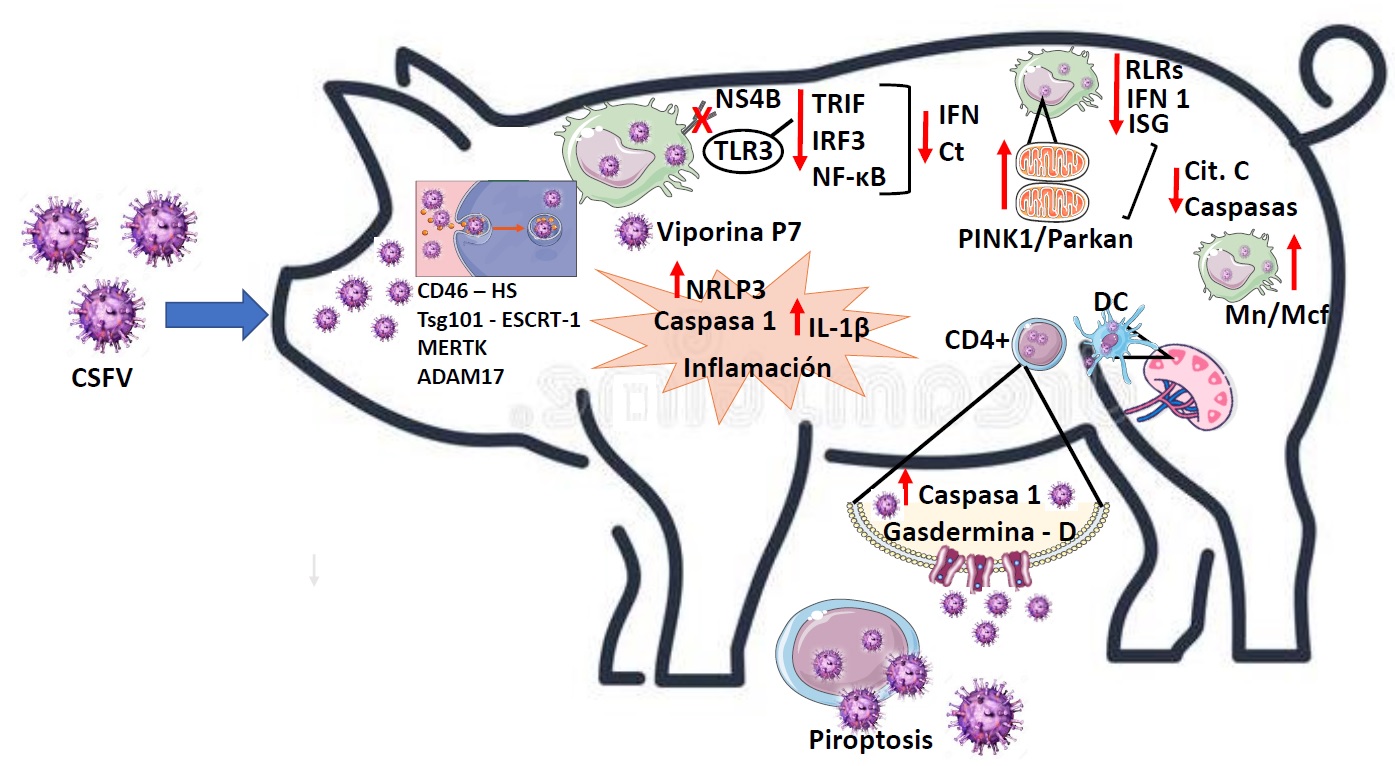Algunas consideraciones de epidemiología e inmunopatología de la peste porcina clásica
Some epidemiology and immunopathology considerations of classical swine fever


Esta obra está bajo una licencia internacional Creative Commons Atribución-NoComercial-CompartirIgual 4.0.
Mostrar biografía de los autores
La peste porcina clásica (PPC) es una enfermedad causada por un virus ARN de la familia Flaviviridae, genero Pestivirus conocido como Pestivirus C. En la actualidad se conoce su distribución mundial y es causante de grandes pérdidas económicas en las producciones porcícolas. Sus únicos reservorios naturales son el cerdo y el jabalí. El objetivo de esta revisión es presentar una actualización sobre algunos aspectos relevantes epidemiológicos e inmunopatológicos de la PPC. La PPC es una enfermedad de notificación obligatoria para Colombia y los animales persistentemente infectados son la clave para su diseminación y endemicidad. La infección por el virus de la PPC se caracteriza por coagulación intravascular diseminada, trombocitopenia e inmunosupresión, dependiendo en severidad por la virulencia de las distintas cepas. El virus tiene afinidad por monocitos/macrófagos y células endoteliales vasculares donde tiene la capacidad de inducir diferentes mecanismos celulares que le permiten proliferar y persistir en el animal como lo son: el estrés oxidativo al incrementar los niveles de especies reactivas de oxígeno que genera una disminución de la biodisponibilidad de óxido nítrico; la fisión mitocondrial que permite una supervivencia celular por la inhibición de la apoptosis; y la inmunosupresión debido a la depleción de linfocitos T y B creada por la piroptosis en función de la gasdermina-D en órganos linfoides periféricos que reduce la respuesta inmune humoral y celular. El entendimiento inmunopatológico desde la explicación molecular en la PPC es importante en el aporte conceptual del desarrollo de nuevas estrategias profilácticas y terapéuticas que permitan controlar/erradicar esta enfermedad.
Visitas del artículo 1261 | Visitas PDF






















